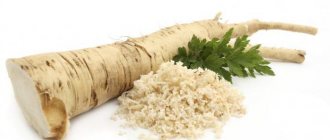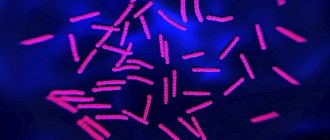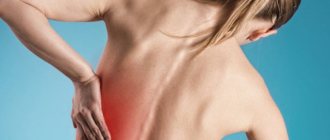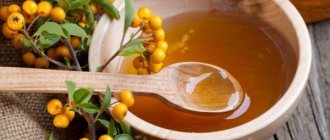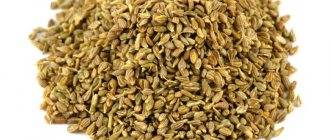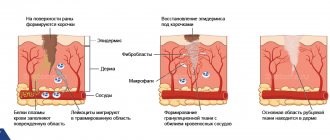Mud treatment, or peloidotherapy, is a physiotherapeutic direction in medicine, which is based on the use of natural mineral and organic mud compositions to restore health. Basically, the technique is used in specialized institutions, most often these are sanatoriums located in close proximity to the source (Pyatigorsk, Evpatoria and others). But mud therapy at home is also possible. Read more about what kind of muds there are, how to use them and in what cases.
Types of therapeutic mud
Not all mud has healing properties. There are several types of compounds that help people get rid of diseases.
- Sulfide. They contain a lot of iron sulfide and salts that are soluble in water. They contain very little organic matter, but a lot of mineral components and gases. Among the latter are methane, hydrogen sulfide, and carbon dioxide. Such mud is extracted from the bottom of salty water sources.
- Hydrothermal. They take their origin from volcanic rocks that have been treated with steam and gases. They are characterized by high temperatures (up to 90 degrees or more), acidic pH, low content of mineral components, and a lot of hydrogen sulfide and carbon dioxide.
- Peat. Formed in places of peat deposits. A feature of these mud deposits is the high content of organic substances, which are characterized by strong enzymatic and bactericidal activity. Moreover, the higher the temperature of the mud, the more pronounced the healing properties of the composition.
- Sopochnye. A distinctive feature of this species is the presence of bromine and iodine in the composition. They also contain a sufficient amount of organic matter. The origin is related to the work of volcanoes associated with oil.
- Fango. They are also a product of volcanic activity - a mixture of volcanic mud with thermal water. Thanks to the latter, fango mud is saturated with beneficial bacteria.
- Sapropelic. Their source is the freshwater bottom. They contain a large amount of organic substances and biologically active compounds. They have excellent thermal characteristics.
Classification of mud and its composition
Healing mud or peloids are natural colloidal formations that contain many minerals. Their useful qualities:
- slow heat release
- high heat capacity
- high ductility
- content of microorganisms and biologically active substances
Healing mud may contain:
- substances that are similar to female sex hormones
- antibacterial substances
- gases
- enzymes
- minerals, etc.
Gases that are found in therapeutic mud arise as a product of the vital activity of microorganisms. Mud is based on calcium and magnesium salts, as well as sand and clay particles. The second component is a mud solution consisting of organic acids and brine salts, which are there in a dissolved state. Also, the third component of therapeutic mud is a colloidal complex, which contains humus and organic substances.
Mud can be divided according to the place of origin into:
- peat
As the name suggests, they form in swamps, mainly where forests grow on the plains. They have a rich organic component. They have bactericidal properties and have enzymatic activity. Also, such muds relieve inflammation and help tissues recover if they are damaged. Sources of peat medicinal mud are swamps of the following countries:
— Belarus
- Russia
— Slovakia
— Poland
— Ukraine, etc.
- sapropelic
These muds form in fresh water bodies, at the very bottom. They contain biologically active and organic components. They are found in the Urals and Trans-Urals, as well as in Poland, Germany and Belarus.
- sulfide-silt
They originate at the bottom of salty reservoirs, in which there is almost no organic flora. Such mud contains many salts that can dissolve in water and iron sulfides. Sulfide-silt muds do not differ in thermal properties, unlike sapropel muds. But they contain a huge amount of minerals, which activate the healing process.
This type of healing mud also contains active substances and gases. They can originate in continental salt lakes, sea bays, estuaries, and coastal lakes. And hill mud is the secretion of mud volcanoes, which contain a lot of iodine and bromine. Sources of such mud are located, for example, in Georgia, Azerbaijan and Anapa (Russia). Hydrothermal mud (one of the subspecies) can be found in Italy, Kamchatka and the Kuril volcanoes.
Fango is a type of hydrothermal mud. They are clays that are produced by volcanoes (volcanic eruptions mix with thermal waters, in this environment bacteria multiply, producing useful waste products). Fangos are mainly found in Italy.
Mechanism of action of peloidotherapy
The therapeutic effect of mud is based on the influence of four factors on the human body.
- Mechanical. Applying a mud mass to the body or taking a bath provides gentle friction of the particles of the composition against the surface of the skin. It can be compared to a light massage effect. Mechanical action increases blood flow, improves tissue nutrition, and enhances metabolic reactions.
- Adsorption. During peloid therapy, metabolic products are released through the skin pores, which are absorbed by mud particles. The same thing happens with keratinized epidermal cells, pathogenic microorganisms, and fat. Thus, mud helps cleanse and rejuvenate the skin and body.
- Thermal. By creating a thermal effect, the therapeutic mass provides vasodilation, improves blood flow and lymph movement, and enhances gas exchange in cells.
- Chemical. Each type of mud has its own unique chemical composition, due to which one or another therapeutic effect on the body is achieved. The active components penetrate freely into the body as a result of the action of the first three factors.
These factors together lead to reflex changes in the body, as a result of which various active compounds are synthesized, hormones are produced, the nervous system (central and autonomic) is activated, and hormonal levels change.
What is mud therapy
Mud therapy is one of the oldest ways to heal the body. It was known in ancient times - among the peoples of Ancient China, Egypt and Greece, and subsequently gained enormous popularity among royalty. In the twentieth century, scientists were able to explain the therapeutic effect of mud therapy - it consists of chemical, thermal, adsorption and mechanical effects on the body.
Healing mud masses, or peloids, are natural formations consisting of water, minerals and organic compounds. When they come into contact with the skin, the beneficial substances that make up them penetrate the body and have a healing effect - they fight pathogenic microorganisms, trigger regenerative processes, etc. Mud is applied to the skin in a warm form, therefore it acts as an irritant and regulates metabolic processes and blood circulation. In addition, they absorb toxins, salts, fats and other metabolic by-products, due to which the skin becomes elastic and tightened, and the aging process slows down.
Beneficial effects of mud therapy
Thanks to the unique combination of physical and chemical properties, mud therapy causes a huge number of responses in the body. Peloid therapy has a regenerative and anti-inflammatory effect, antimicrobial and metabolic effects, and has a positive effect on fat metabolism, vascular condition, and muscle tone.
The healing qualities of mud are also manifested in cleansing the body of toxic metabolic products. Increased lymph flow leads to accelerated removal of toxins from cells. This, in turn, has a beneficial effect on the functioning of all organ systems, especially the heart and brain. The antimicrobial effect of mud procedures is actively used to treat external skin lesions, speedy healing of scars and injuries.
Regular courses of peloid therapy lead to an increase in the body's resistance to pathogenic microorganisms and viruses. Strengthened immunity also affects a person’s appearance: healthy skin, positive mood, strong hair and nails.
A greater effect can be achieved by combining mud therapy with the action of electric current (electric mud therapy, galvanic mud therapy).
How is mud used for treatment?
There are many techniques for using healing mud. The most widely used methods of peloidotherapy are:
- Applications. The composition can be applied to a specific area, for example, on a joint, or to cover the entire body (excluding the head and heart area).
- Tampons. Used in gynecology, otolaryngology, proctology. It is possible to simultaneously apply the application in the pelvic area.
- Thermocompresses. The application of the mud composition is combined with a thermal therapeutic compress.
- Bath. The person is completely immersed in the medicinal composition, which is preheated. Often practiced in endocrinology, dermatology, neurology, and orthopedics.
In addition, some institutions practice applying mud to a specific area of the spinal column. The action of the medicinal composition in a specific segment reflexively leads to changes in the condition of the corresponding organs.
Treatment with mud. Kinds
The procedure is simple: the mud is diluted to a paste-like state and applied to a specific area of the body. The temperature of the treatment mask, composition and duration of exposure - all this is adjusted in each specific case.
Therapeutic muds are different; they differ not only in appearance, but also in properties, as well as in composition.
Types of therapeutic mud:
- sulfide silt - such a medicinal substance is formed in the seas and oceans, in a salty environment. This mud is dark, almost black. Natural mud contains many useful substances, especially minerals;
- sapropelene mud – collects at the bottom of a “stagnant” reservoir. The color of the mud depends on many conditions and can be blue, the color of dark olives, rich brown, black with a bluish tint. This mud contains a lot of bromine, cobalt, iodine and other useful trace elements. Used to treat many diseases;
- Peat mud – formed in swamps and swampy areas. The color of this healing mud is dirty black, it contains a lot of organic substances.
Each type of mud is unique in its own way: in appearance, composition of useful substances, and area of application. But they all begin to “work” only when heated.
There are several ways to use mud:
- Taking mud baths. This treatment is practiced only in sanatoriums. The procedures help to increase the tone of the whole body, improve the condition of the skin, relieve pain, and alleviate the patient’s condition.
- Applications - mud is applied only to a certain area of the body: these are wraps, masks, compresses, electrolysis. Exceptions: these are the neck, head and heart area. The duration of the procedure is determined in each specific case, but not more than 20 minutes. The number of procedures is also individual: on average it is 2-3 times a week or 2 days in a row, then a day off, etc. The course of mud treatment is about 10-12 procedures, and in some cases 18 may be needed.
Who is peloidotherapy indicated for?
The list of indications for the use of mud therapy is so wide that it is almost impossible to list them. These are numerous diseases of the musculoskeletal system (for example, arthrosis), gynecological disorders and pathologies (endometriosis), diseases of the reproductive system (infertility), neurological disorders and many others.
Peloid therapy is also prescribed during the period of rehabilitation after injury, stroke, or surgery. Mud procedures are used for preventive purposes, which is especially important for people who are at risk due to any factor.
For each of the individual groups of diseases, there are indications for the use of one or another type of mud.
Mud and heat treatment
During the mud therapy procedure, the therapeutic effect is achieved through the action of the components of therapeutic mud on various parts of the body. This type of physiotherapy is used in the form of mud baths, wraps, compresses and masks.
Mud therapy can help in the treatment, including chronic diseases. Mud treatment in a sanatorium is especially effective.
Mud therapy:
- activates the body's defense mechanisms,
- has a pronounced antimicrobial effect,
- promotes restoration of cartilage tissue of joints.
Mud applications
Treatment with natural mud can be carried out using different methods. The most common method of mud therapy is mud applications, in which mud is applied to areas of the body located above the pathological focus.
There are many indications for using mud applications. First of all, these are various diseases of the musculoskeletal system. Mud therapy is effective for neurological, gynecological, urological pathologies, disorders of the endocrine system, allergies, and inflammatory processes.
Mud applications are contraindicated for acute inflammation, neoplasms of any nature, blood diseases, high blood pressure, and a tendency to bleed.
Mud baths (wraps)
Mud can be used for treatment in diluted form by adding water to it. It is in this form that they are used in mud baths.
The concentration of dirt in such baths can be weak, medium or strong. The higher the concentration of dirt, the more intense its effect on the body.
Mud baths are divided into general and local. General baths with mud applied to the entire surface of the body are rarely used and have many contraindications for use. Local baths are most often used: on the lumbar region, lower and upper extremities.
Mud baths are indicated for chronic diseases of the musculoskeletal system, respiratory organs, gastrointestinal tract, nervous system, and female reproductive system.
Treatment is contraindicated for tuberculosis, acute inflammation, exacerbation of chronic diseases, and blood diseases.
Mud treatment of gums
Treatment of gum inflammation is one of the most pressing topics in modern dentistry. The most effective method of treating the oral cavity is mud treatment of the gums.
Before performing mud treatment on gums, preparation is necessary. It involves removing tartar, filling carious cavities, and removing roots. Upon completion of the sanitation of the oral cavity, a course of mud applications is carried out on the gums.
Before applying to the gums, the therapeutic mud is heated. This treatment method relieves symptoms of inflammation, relieves pain and disinfects the oral cavity.
After several sessions, gum bleeding decreases and stops, the unpleasant odor and loose teeth disappear.
Galvanic mud
Mud therapy can be carried out using electric current. This method of physiotherapy is called galvanic mud. The technique for performing galvanic mud is similar to conventional electrophoresis, but the galvanic current does not pass through the medicinal solution, but through the mud cake. With this method, the healing substances of the mud penetrate faster to the pathological focus, and the effectiveness of treatment increases several times.
Galvanic mud is used for diseases of the musculoskeletal system and nervous system, diseases of the reproductive system in women and men, chronic inflammation of the respiratory tract and ENT organs, and skin pathologies.
Like any type of treatment, galvanic mud has contraindications. These include general contraindications to treatment with thermal procedures and mud, allergies, diseases of the circulatory system, and progressive hypertension.
Electrophoresis with healing mud
Electrophoresis with therapeutic mud combines two methods of physiotherapy – electrophoresis and mud therapy. Electrophoresis procedures with therapeutic mud have anti-inflammatory, analgesic, absorbable and reparative effects.
To carry out the procedures, gauze wipes soaked in a mud solution are applied to the surface of the patient’s body, and electrodes are attached. The beneficial components of mud enter the body through a direct electric current through the skin. Direct electric current accelerates blood flow and activates metabolic processes.
Treatment is indicated for bronchopulmonary inflammation, rheumatic processes, vegetative-vascular disorders, functional diseases of the gastrointestinal tract, diseases of the stomach, biliary and female reproductive systems.
Cavity mud therapy
Cavity mud therapy is carried out by introducing mud tampons into the cavity of the rectum or vagina. This treatment method is used to treat inflammatory diseases of the pelvic organs.
Therapeutic mud intended for cavity mud therapy is thoroughly cleaned of various impurities and rubbed through a fine sieve. Rectal mud tampons are used to treat chronic prostatitis. Abdominal mud therapy is usually combined with mud applications on the lower abdomen.
Thermotherapy
Thermal treatment is the effect of heat on the body for therapeutic purposes; in this case, various components act as a coolant. These may be physical factors such as light, electricity, electromagnetic fields, or heating pads, poultices, or hot baths.
Heat therapy is one of the most popular procedures in health centers. The therapeutic effect is achieved by improving local blood flow at the site of heating and exposure to additional substances that are used during this procedure (medicines, various herbs and mud).
Paraffin-ozokerite treatment
Paraffin-ozokerite therapy is a method of physiotherapy using heat. Paraffin and ozokerite are used for procedures. These substances have a plastic structure, low thermal conductivity, and retain heat well. When cooling, molten paraffin and ozokerite decrease in volume, also exerting a compression effect.
Before the procedure, paraffin and ozokerite are melted in a special container to a liquid state and cooled to a temperature of 50-55 degrees. A plastic mass is formed, which is applied using the application method to different parts of the body.
Paraffin-ozokerite treatment has a wide range of indications. Procedures are prescribed for arthrosis and arthritis, osteochondrosis, myositis, post-traumatic conditions, diseases of the skin and internal organs, pathologies of the peripheral nervous system, and inflammation of the female reproductive system.
Treatment is contraindicated in feverish conditions, tuberculosis, pregnancy, and bleeding tendency.
Contraindications
Despite the universality of the use of peloid therapy, not everyone can use therapeutic mud. Contraindications are such conditions and disorders as:
- exacerbation of any chronic disease;
- period of bearing a child;
- breast-feeding;
- some gynecological disorders;
- hypertension 3 degrees;
- pathologies of the thyroid gland;
- infectious processes in the body;
- varicose veins;
- pathologies of the heart and blood vessels.
In each individual case, before starting mud treatment, you must consult a doctor.
The mud composition has such a powerful biological effect on the body that, in the presence of a tumor, it can activate its growth.
Benefits of mud therapy
- With an integrated approach using drug treatment or other physiotherapeutic techniques, a more pronounced and lasting effect can be obtained, while there are no side effects even with prolonged exposure to therapeutic mud on the body.
- The technique is easy to use, the effect of the procedures is noticeable after the first sessions. Moreover, in some cases, mud therapy is considered the most effective method of recovery, incomparable in effectiveness to other methods of treatment, for example, for joint diseases: in case of inflammation or stiffness, the effect is noticeable after just five procedures.
- The technique can be used in almost all categories of patients, including women during lactation, since the substances present in the therapeutic mud do not penetrate the bloodstream. Childhood is not an obstacle, although medical supervision of the procedures is desirable.
Can mud therapy be used for children?
Peloid therapy is also used in pediatric practice. The indications for treating children with mud are the same as for adults. The difference in treatment is only less exposure time and a shorter course. In addition, due to underdeveloped immunity, there are more contraindications in childhood. In addition to those listed above, they include: cerebral palsy, viral diseases of the liver, lungs, infectious arthritis, polio and others. Therefore, before mud procedures, each child must undergo an examination prescribed by a pediatrician.
How to apply mud procedures correctly?
In order for mud therapy procedures to bring maximum effect, you should adhere to certain rules during their implementation.
- Mud will have a greater healing effect if applied to clean skin. Therefore, before going for a physical procedure, you need to take a shower.
- Before the session, it is advisable to examine the entire body for damage, especially if you are going to take mud baths or make extensive applications. Even minor wounds or scratches after contact with mud can lead to negative consequences. To avoid this, it is enough to apply a special protective agent to them.
- Women are not recommended to conduct peloid therapy sessions during menstruation (even if they use a hygienic tampon). An open cervix can also cause serious problems later on.
- Experts do not advise applying mud compositions to the body while in the open sun. The healing mass itself has a thermal effect, and together with active solar radiation this can lead to overheating and heat stroke.
- Upon completion of the procedure, the remaining medicinal composition should be removed using plain water, without using detergents. You can dry yourself as usual with a dry towel or wrapping yourself in a cloth.
- The mud therapy procedure has a strong impact on all systems of the body and is a stress factor for it. Therefore, after finishing it, you should lie down or sit for 20-30 minutes.
- When undergoing a course of mud therapy, it is not recommended to drink alcoholic beverages or smoke. This will reduce the effect of treatment.
- If a peloid therapy session takes place in a specialized institution, then it is necessary to adhere to the recommendations of the health worker, fulfilling them unquestioningly. If treatment with mud occurs “savage”, then it is necessary to undergo a preliminary examination and receive appropriate instructions from the attending physician.
Any change in health for the worse or the appearance of discomfort during the procedure is a reason to stop it and consult a doctor.
You can often see people vacationing at resorts near mud springs applying mud to themselves without following any rules. This is absolutely forbidden to do! Moreover, there are certain restrictions on the frequency of sessions (most often every other day) and on the duration of the course (on average 10 sessions).
Healing mud. How to properly treat
Regardless of the chosen treatment method and type of dirt, you must always follow these rules:
- Before applying therapeutic mud to a certain area, you must take a shower, but you cannot use soap, foam or other detergents. You just need to rinse with warm water.
- If there are cuts or wounds on the skin, then these places need to be protected from dirt getting under the skin. It is necessary to lubricate the affected areas with ointment and rich cream.
- The procedure is not long, even despite this, you must try to relax and not think about anything. Then the body is at rest, the skin does not secrete fat and sweat in large quantities. It is necessary that each cell takes in as many active substances as possible.
- After completing the procedure, it is necessary to remove the dirt and rinse off the residue with water (but without soap or other detergents!). The skin should be soaked with a towel, without rubbing too much.
- After the procedure, it is advisable to relax and lie down for at least half an hour. Then you can return to your usual rhythm of life and go about your business.
- During the course of mud treatment, it is not advisable to use skin moisturizers, or frequently shower with gels, soaps or foams. It is important that a thin film of mud remains on the skin, which continues to work in between procedures. That is why it is enough to take a shower without soap. If you use detergents, the film is washed off and the effect of the procedure is minimized.
- It is strictly forbidden to take alcohol-containing drinks or medications during mud therapy.
Do I need to prepare for mud therapy procedures?
It was already mentioned above that peloid therapy sessions have a greater therapeutic effect if you first take a shower or bath. But the concept of preparation includes not only cleanliness of the body. Before going to the resort, hoping to take mud treatments, you need to undergo an examination. To do this, just contact a therapist (physiotherapist). He may order tests such as:
- blood and urine tests;
- electrocardiogram;
- fluorography;
- laboratory analysis of vaginal secretions (for women).
Depending on the history of diseases and the clinical picture, consultation with a specialist may be required. Such actions will guarantee that you use therapeutic mud with maximum effect and avoid complications.
Mud therapy in pediatrics
In pediatrics, indications for the use of mud may be as follows:
- chronic hepatitis
- chronic cholecystitis
- viral pneumonia outside the acute stage
- chronic tonsillitis
- cerebral arachnoiditis
- infectious arthritis
- polio
- encephalitis
- cerebral palsy
Depending on the age, the doctor will select the duration of the mud treatment procedures. For patients under six years of age, 5 to 15 minutes is enough. If the child is over 6 years old, the procedure may take a minimum of 10, maximum 20 minutes. Procedures are carried out every other day. And in total there are approximately 15 procedures per course. The mud is heated to a temperature of 38-42 degrees. And in the office it should be at least 20 degrees Celsius. After the procedure is completed, you need to rest for half an hour to an hour. If it’s winter outside, you can’t go out there for two hours, you need to be indoors.
Remember that any self-medication can have dire consequences. Consult qualified physicians. Health to you and your children!
Peloid therapy at home
Today, if you need peloid therapy procedures, it is not necessary to go on a long journey to a natural source. You can use the healing properties of mud yourself at home. Healing compounds are freely available in pharmacies, beauty centers, health stores or online stores. You can bring them from the sea (or, for example, ask your friends). Most often they are used in cosmetology, for diseases of the musculoskeletal system, for treating the skin, and getting rid of cellulite “crust”.
In order for mud therapy at home to bring the expected benefits, before purchasing you should carefully study the composition of the product, the manufacturer (where it is packaged), expiration dates and other nuances. You should definitely consult a specialist to rule out contraindications.
When using therapeutic mud yourself, you must strictly follow the attached instructions, and also store them correctly (if the solution has not been used in full). If discomfort occurs during the use of such a product, the mass must be quickly washed off. If an allergic reaction occurs, you will need to take the appropriate medication and consult a doctor.
In Russia and in foreign countries there are a sufficient number of sanatorium-resort institutions and mud baths that provide pelotherapy services. In addition, in many cities you can undergo mud treatment in specialized clinics and centers. The free sale of the medicinal composition further expands the possibilities of its use. Therefore, everyone today can experience the effectiveness of this physiotherapeutic agent. The main thing is not to forget that therapeutic mud has a serious effect on the body, and its improper use can not only aggravate the disease, but also lead to more tragic consequences.
Contraindications for mud therapy
Mud therapy, being an obligatory element of balneology and balneology, requires a competent approach and a full examination of the patient before the procedures. The powerful activating influence of mud can provoke the growth of tumors, which is especially important in the presence of precancerous diseases. A strict list of contraindications should never be ignored, especially when self-treating with mud at home:
- any inflammatory processes of an infectious or non-infectious nature in the acute stage;
- exacerbation of chronic diseases;
- hyperthermia;
- neoplasms (malignant and with a risk of malignancy);
- tuberculosis of any localization;
- decompensated heart defects;
- stage III hypertension;
- aortic stenosis and aneurysm;
- phlebeurysm;
- blood diseases;
- nephritis and nephrosis;
- tendency to bleed;
- thyrotoxicosis.
Contraindications in gynecology for mud therapy
- pregnancy and lactation;
- menstruation period;
- uterine polyps;
- uterine fibroids;
- ovarian cysts;
- endometriosis;
- bleeding erosions of the cervix;
- uterine bleeding not associated with menstruation.
Thus, mud therapy is prohibited for uterine fibroids, although some sources write the opposite.
